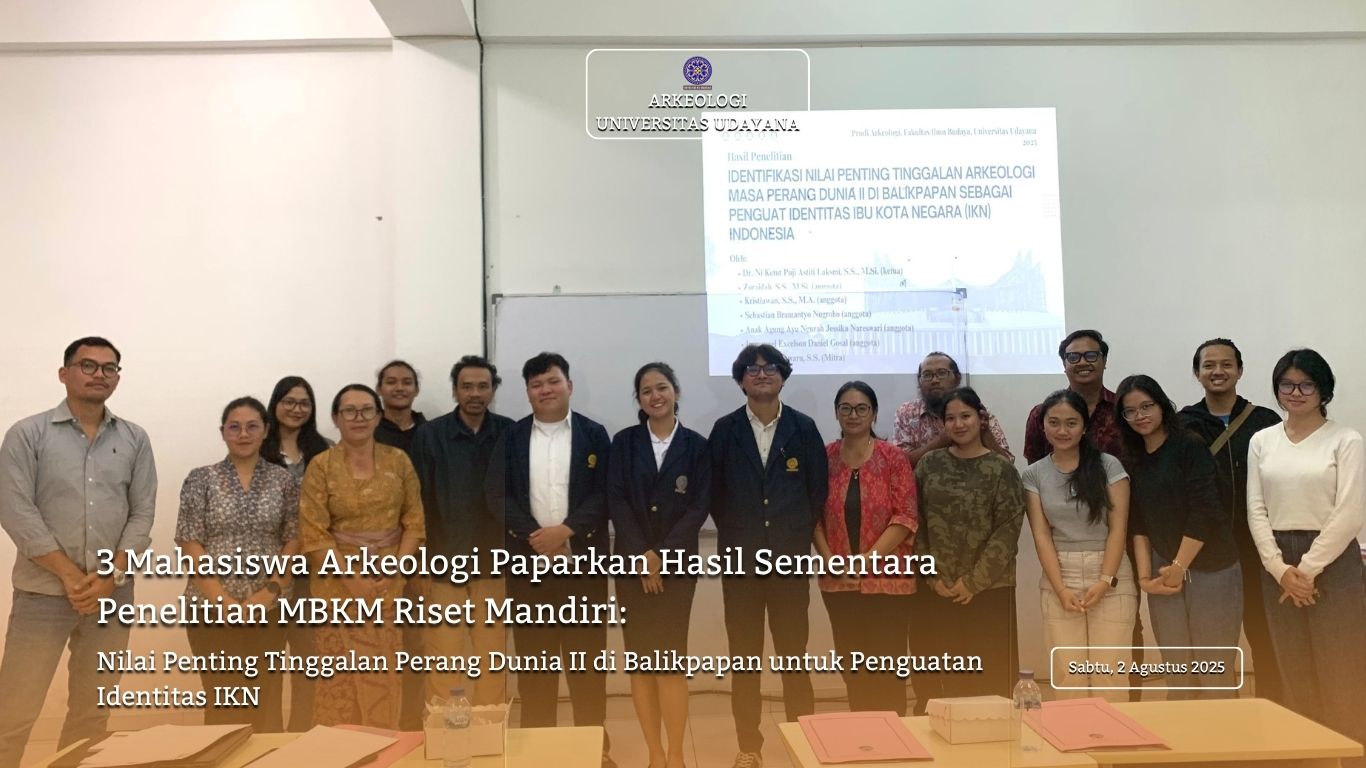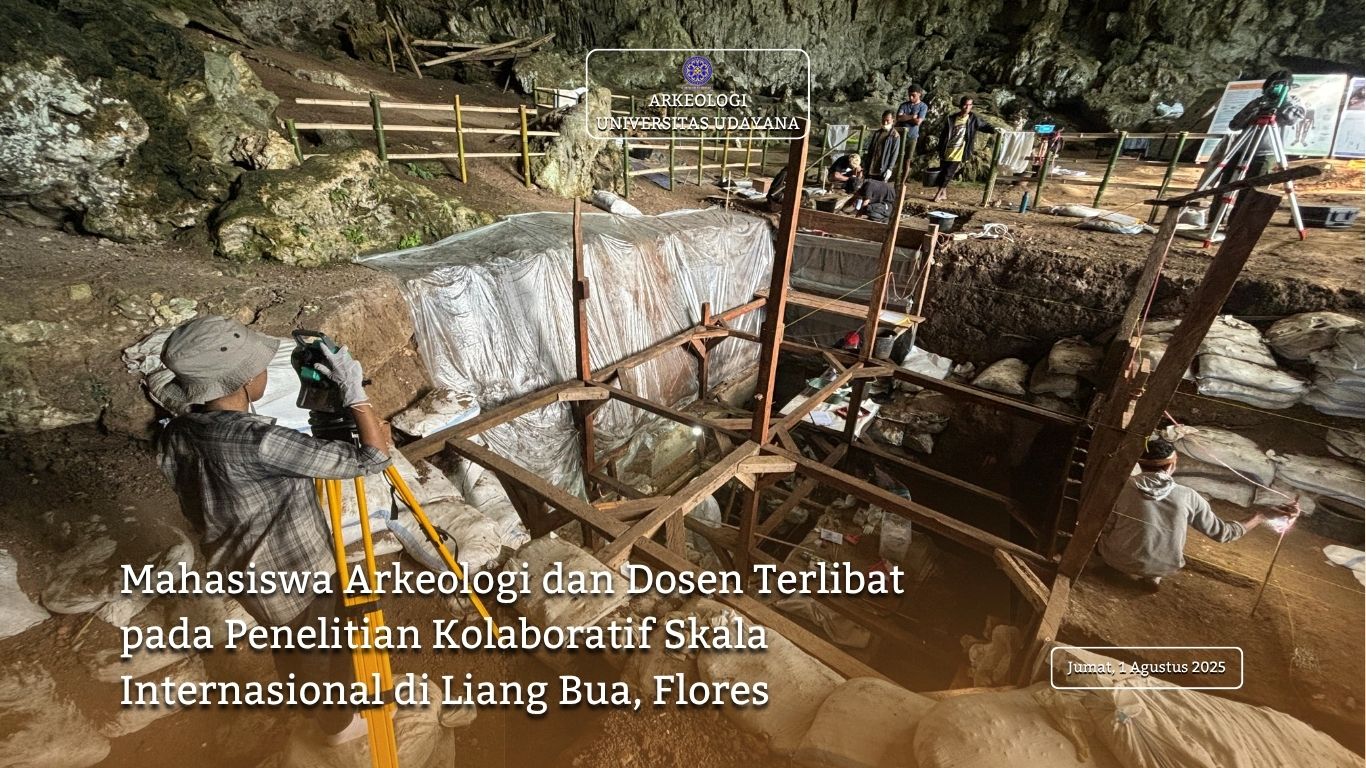Public Lecture: Nias Culture From the Beginning Until Today
Back on Thursday, March 14th, 2024,
the Faculty of Humanities welcomed one of their alumni named Dr. I Ketut
Wiradnyana. He is an archeologist who specializes in prehistory and has done
research in Sumatra for a long time. He returned to Udayana University to
become a keynote speaker in a public lecture titled Budaya Nias Dari Awal Hingga Masa Kini or “Nias Culture From the
Beginning Until Today”.
The
public lecture took place in the faculty’s Soekarno room, inside the
Poerbatjaraka building. There were 60 people in the audience, which included
undergraduate students from both the archeology and history programs. A few
lecturers were also in attendance.
After the opening remarks from Mr.
Rochtri Agung Bawono, lecturer in Udayana University’s Archeology program who
acts as the moderator of this lecture, Dr. Wridanyana jumps straight into his
material. The focus of this public lecture is (of course) Nias Island and its
history. Starting from the inter-glacial period, Nias Island is an island that
didn’t sink at the time, thus making it a worthy home for humans. For this same
reason, Nias Island can be considered an “Old Island”, like the island of Java.
It is possible that Nias Island was
part of the human migration route during prehistoric times. This can be tied to
the migration activities present during the Paleolithic period in North and
West Sumatra. Based on the archeological evidence present, humans and their
ancient cultures lived near prehistoric rivers during the glacial period. These
rivers flowed when the Sunda Shelf still existed and sank as the sea levels
rose. Nias Island, as stated before, did not sink. So, it could be assumed that
remnants of that time can be found here.
Upon
entering the Mesolithic period, the historical relics found from this age have
the Hoabihn characteristics. According to the data present, the influence of
Hoabihn culture can be found in the east and west shores of Sumatra since
12.000 years ago. 2 mesolithic sites on the island possess Hoabihn
characteristics, Tebing Rawa and Goa Togi Bogi. Experts have also found
arrowheads from this era.
Dr. Wiradnyana stated that migration
also happened in the Neolithic period. What’s unique here is that the artifacts
from this age are that it’s different from the Neolithic artifacts found in
Gayo, Aceh, that have existed since 4.000-5.000 years ago. Nias doesn’t have a
natural source of metal. That is why they pillage nearby villages to collect
the necessary materials for ceremonial purposes, like making a drum (nekara). Locals also use wood if these
materials can’t be obtained.
Many traditions practiced by the
people of Nias today have roots in prehistoric human civilizations. Several
instances exemplify this connection. For instance, they still maintain the
practice of constructing megalithic structures and preparing sacrificial
animals for festivities. Furthermore, their local architecture, characterized
by closely clustered houses, serves as protection against both earthquakes and
invaders. The Hoabihn culture greatly influences the distinct architectural
styles, customs, and traditions observed in both the northern and southern
regions of Nias.
At the end of this lecture, participants are encouraged to revisit the relics around them to ensure the accuracy of their dating. Are the sites that we believe to be Neolithic truly Neolithic or not? Data, especially data derived from absolute dating methods, can greatly assist us in this regard. Hopefully, all of us, archaeology students or cultural heritage enthusiasts, can increase our efforts to deepen our understanding of our cultural heritages, especially those that exist near where we live.
EMMA/BIDANG 1
.png)



FACULTY OF HUMANITIES